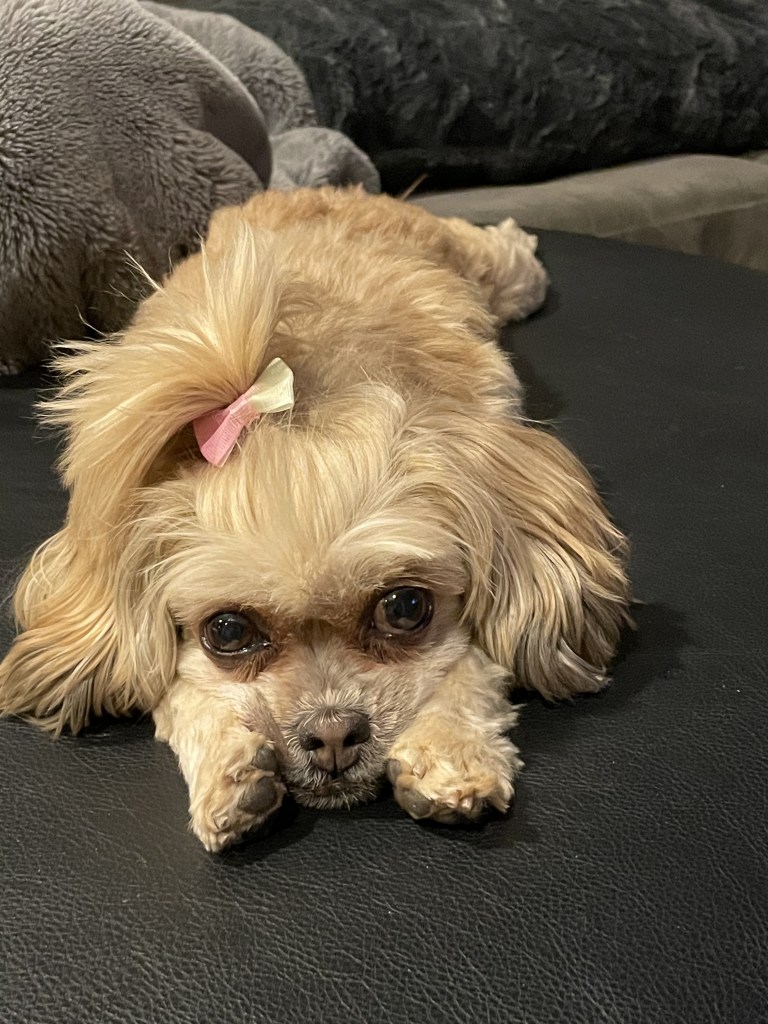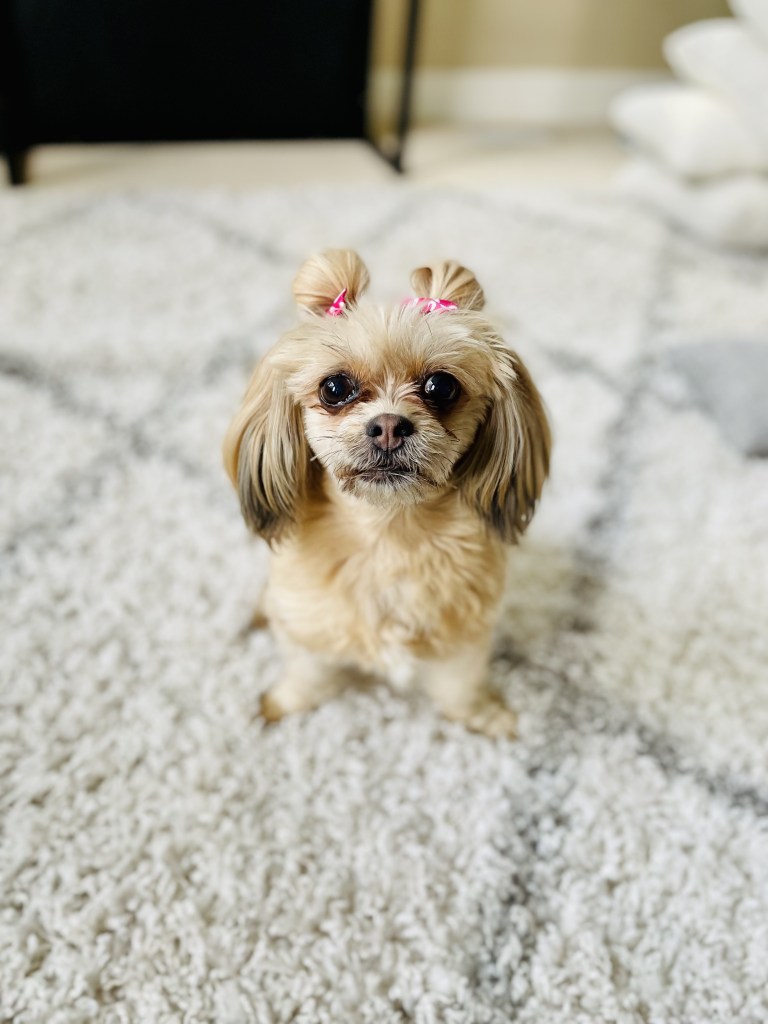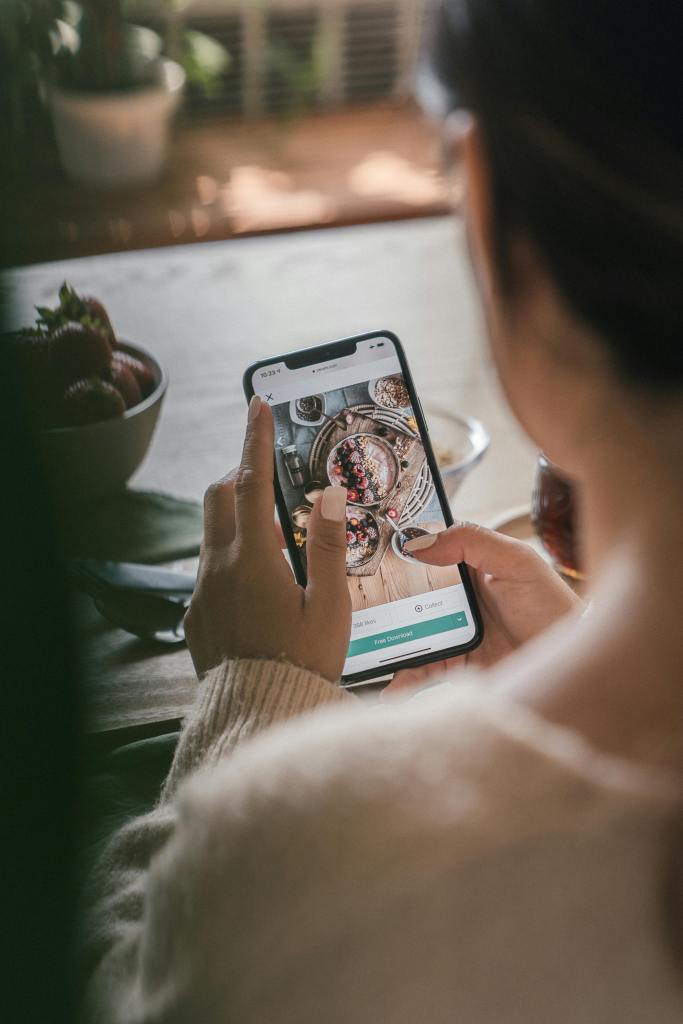



I was recently listening to Jonathan Fields podcast, “Goodlife Project” and was taken back by some information he and his guest were sharing. I would consider myself a pretty active person, I walk miles a day outside, sometimes add in some additional trampoline, walk/step, or dance exercises. BUT, when I heard them talking about how sitting for hours at a time can be worse than smoking packs of cigarettes, an alarm went off in my head!! What!! AND that even though I am active, THAT activity cannot replace the stagnant time of sitting. OMG!! WHAT!!
That was pretty shocking news to me. I do have daily hours of down time where I sit and work on writing, projects, searches, etc. I never would have thought that sitting could have such a negative impact on the mind and body. Who would have thought that even getting up when your Apple Watch says “stand” really does mean something important. It should be like a bell that goes off to a higher awareness and personal challenge to MOVE…even just a little.
I decided I needed to do some research into MOVEMENT and what is essential and imperative to best health.
JONATHAN FIELDS guest, Dr. Jennifer Heisz, author of Move your Body, Heal your Mind
They were talking about movement every 30 minutes to wake up the brain. It makes sense. Think about your brain like our computers. After a certain period of time they go into sleep mode. Our brains after sitting for awhile go into energy conserve mode, so waking everything up every 30 minutes for a movement break makes so much sense for overall wellness.
WOW!! In dealing with depression and anxiety: stress induced depression seems unresponsive to antidepressants, often because the root cause of it is not serotonin, or a lack of serotonin, which the drugs treat, but rather inflammation. And inflammation, when it gets into the brain, it alters these pathways that make it difficult to feel good. And so Exercise because it’s anti-inflammatory, the MYO kinds released from the muscle. Those actually create this anti-inflammatory effect. It is a pharmacy for people who have this drug resistant depression. It is the medicine they need and it, it has clinically significant benefits for depression reduction on par with antidepressant drugs. Just fascinating.
How do we manage our health? How do we manage our mental health? Prescription drugs may be one part of it, but lifestyle and Exercise. Given that it has the same benefits at reducing our depression as a pharmaceutical, it just blows my mind that this is not part of the regular conversation.
Even a little bit of movement: Do a little bit of movement. In fact, what I recommend people do is just break up your sedentary time as a starting point. So we’re all sitting all day. Every thirty minutes just stand up. Do a two minute movement break. This is enough to restore blood flow to the brain. Infusing the prefrontal cortex with oxygenated blood flow helps you focus, be more creative when we’re able to think outside the box are less likely to ruminate on negative thinking, which is a symptom of depression. And so it can start etching away at those symptoms that are preventing us from being active.
Our reaction to stress is also a big influencer: So I think sometimes it can be one thing, but sometimes it can also be the way we react to stress. So there’s some really interesting research that shows that it’s not necessarily the level of stress that you have in your Life, but how you react to it. There’s this research that shows when people are more Moody. So like if they get really high on those good days and really, really low, angry, intense on those bad days. And it’s this undulation this, you know, this pendulum that swings between good and bad days. That can really start to damage the body. That increases inflammation. And then can cause Anxiety and depression.
Be gentle and compassionate with yourself and how you are actually FEELING: Check in with yourself and see how you are feeling. Do you need to adjust your workout to not be so intense on a day when you are feeling off or worn down from various stressors. Look at the emotional highs, lows, stresses, challenges, workloads you are dealing with and be gentle.
Try a mental health mode of exercise. So if I, if I have scheduled a thirty minute jog and I’m not feeling well, I’ll go for the thirty minute walk. I’ll put the time in, but I’ll take off the intensity. And I think that that’s just such a such a, a good approach to movement for mental health.
Benefit of movement and sleep: Talk about NATURAL SLEEP AID…MOVEMENT. So ATP is the cell’s energy currency that we break down to get energy. And when we break down ATP, it produces this byproduct called adenosine and adenosine throughout the day as we do work, mental work, physical work, it starts to build up. And then once it reaches a certain threshold, it triggers sleep. So it’s a natural sleeping aid. The brain has receptors for adenosine that triggers sleep. And when we move more during the day, we break down more ATP. We build up more adenosine and so we sleep more soundly, we fall asleep faster and we trigger sleep because we’ve created more of this natural sleep aid.
___________________________________________

A podcast that was interviewing Dr. Jennifer Heisz was mentioning some key ideas to get your body MOVING…you may have to trick your body and your brain into exercising. According to Dr. Heisz she suggests: take a sip of a sugary drink or throw in a piece of sugar gum, then turn on some of your favorite pump up music to release the dopamine.
She also talked about why exercise is able to help with anxiety. When we exercise, there’s a resiliency factor that’s released in the brain called neuro Y and this resiliency factor helps to calm.
Fear center called the amygdala. It’s the brain region. That’s like hypervigilant, constantly scanning the environment for threats, but also can be triggered by our thinking, and worries. And so this neuropeptide, Y can be released. By light to moderate activities. So which means you could be going for a brisk walk and that would be enough to increase neuropeptide. Y one thing that’s really interesting is that neuropeptide Y seems to protect the brain from trauma. So when we look at people who have gone to war, for example, some of them will return. With post traumatic stress disorder, but some won’t and the ones who are protected are the ones who have higher levels of neuropeptide. Y. and so we can build more of that resiliency factor with exercise, which I think is amazing. And then we don’t need to exercise vigorously for that. We can just exercise that light to moderate.
The problem is how we view stress. A lot of the time when we see it as negative or having an overly negative impact on our health, research shows that’s when it’s most damaging to our health is when we have that negative connotation or negative perception on it. So it’s not stress that’s good or bad. It’s our, our thinking that makes it that way.
Exercise helps train the stressors: So when stress is high and it’s negative, that amygdala, the fear center is on and it’s active. And so we’re not. We’re no longer responding to the situation at hand, we’re responding to our own vulnerability. Then we’re not our best self, we’re angry, we’re defensive, we’re negative. We are viewing everything through this lens of vulnerability and that’s when it that’s when it really becomes destructive. And so we can get ahead of that. We can start. To heal that and to manage our reaction, to stress using exercise because exercise is, it is technically a stressor. It does activate the stress system. But like I said, in this safe space that we control how long we go. We control how high it goes. It’s really is a way to Essentially like tone the stress system, like you’re flexing your stress muscle, and then that stress muscle grows stronger so that you can tolerate heavier stress loads without being so reactive. And then you are quicker to recover less feelings of vulnerability and the ugliness of stress that. It all it brings out in us, we can stay calm.
Every 30 minutes, stand up for two minute movement break. This is enough to increase, focus, creativity, to help restore blood flow to that prefrontal cortex that we need to be productive at work.
So five minutes of this can be like jumping jacks, high knees, but it doesn’t have to be vigorous. It could also be just stretching. And this helps to helps us to stay focused.
10 minute self-paced walk has been shown to boost creativity. Three 30 minute brisk walks like in a week. That’s not that much time we’ve shown in my lab reduces anxiety. That’s also the typical prescription tested for reducing depression and in some people that works better than antidepressant drugs.
—https://mindfulmamamentor.com/move-your-body-heal-your-mind-jennifer-heisz-360/
__________________________________
I bought her book and began reading it. I am almost half through it, but I thought I would add my little note highlights…
—Group-based exercises increase your pain tolerance.
–WOW!!!! All forms of exercise have the potential to make us feel good. A solo hike in nature. A fun-filled bike ride with friends. A deep dive into a refreshing pool. Or lifting heavy weights up overhead after a smooth snatch. That’s because exercising causes the release of a feel-good neurochemical called dopamine. Exercise increases dopamine 130 percent above baseline, which is comparable to the dopamine released by other naturally rewarding things like food (130 percent) and sex (160 percent). Importantly though—and the real reason that its highly unlikely for me or any other athlete to be truly addicted to exercise—the dopamine released by exercise is significantly less than the dopamine released by alcohol, nicotine, and other drugs of abuse. Alcohol increases dopamine by 200 percent, Nicotine by 225 percent, Cocaine by 350 percent and Amphetamine by 1100 percent. Although that may sound like a lot of pleasure, too much dopamine is bad for the brain and can result in serious and potentially fatal brain damage.
–Her section on “The Brain on Drugs” I immediately took a screen shot and sent to my daughter’s previous college boyfriend. We care about him and he is at that prime age of lets just party and live it up while we are young & I told him that he needed to read this part of the book to help protect his brilliant, engineering mind.
“Technically, drugs and alcohol “cook” the brain’s reward system by inundating it with too much dopamine. The brain reacts by imposing tight restrictions: Less dopamine is produced, and fewer dopamine receptors are made. This is done to alleviate some of the pressure, but it has some unintended side effects.
For one, the small amount of dopamine left in the addict’s brain when sober now has even less of a chance of binding to its receptor. If dopamine can’t bind to its receptor, it can’t induce pleasure. This is the ultimate killjoy.
At first, naturally rewarding things like food and sex seem very dull. Soon, the drug itself loses potency, and the addict must consume more and more of the drug to get the same high {aka drug tolerance] That is why seemingly harmless experimentation can quickly spiral out of control….Things get more difficult the longer the addict abuses, as the brain continues to strip away more and more of its dopamine receptors. Now only supernatural pleasures can give the brain the pleasure it needs to feel good. This is when the three of the four C’s of addiction arise: cravings, compulsion to use, and loss of control in the amount and frequency of use.
The brain then changes the way it makes decisions, giving rise to the fourth and final C of addiction: Use despite negative Consequences. The dopamine-starved brain demands instant gratification, almost to the point that it would rather die than wait. It convinces the addict that the immediate benefits of a quick fix outweigh any long-term costs of drug use. This is not true. In reality, the addict risks losing it all. Health…relationships…finances…freedom. Even life itself.
—–BUT, there is hope. in her book (pg 71–talks about getting the addicts brain to bounce back. It just takes some time and effort to rebuild the system)——-
—Regular exercise tones the stress response, making us less reactive to psychological stressors, and this promotes optimism, even amidst the most seemingly uncontrollable situations.
—30 minutes of light-to-moderate-intensity exercise three times a week is enough to soothe your anxious mind.
—Get out of your head and into your body: When your head is a mess with anxiety, you have but one choice: You need to get out of your head and into your body. You can do that by paying attention to your breath. I see your skepticism, but I have a little neuroscience to back this up. In one study, researchers recruited twenty-six people who had no experience with meditation or yoga. Over 2 weeks, the participants learned how to pay attention to their breath by becoming aware of the body’s position and focusing on the sensation of breathing such as the rise and fall of the belly or the rush of air under the nose.
Why attention to breath is so effective at resetting an anxious mind? Because paying attention to the breath capitalizes on the fact that the mind can only focus on one thing at a time. Therefore, the more time the mind spends attending to the body (and its breath), the less it has time to worry.
—She talks about a huge study done on exercise and depression on page 61 & found big findings on how EVEN JUST ONE HOUR A WEEK OF EXERCISE MAKES A BIG DIFFERENCE!!
—Why the drugs don’t work: Antidepressant drugs only treat a specific biological dysfunction, namely low serotonin. Outdated medical practices assume that low serotonin causes all mood disturbances. This is not true, but as of right now, no further testing is done to prove otherwise.
—Unexpected cause of mental illness: surprisingly, its likely inflammation
—Just breathe to CALM.
—Exercise rescues happiness in depressed patients. She talks about Exercise vs Antidepressants & how in some cases exercise is the winner and can work better in some situations.
SO many great things to learn about!! I LOVE learning, so this book has been full of good info to help create a healthier life—mind and body. When I finish the book, I will post more highlights. GOOD INFO IS ALWAYS GOOD.
Make today a little healthier for you. YOU are your greatest investment in your life. Take the time to learn, to grow, to make better choices, to MOVE.
Peace, Love and Light to you today. xoxo. -H











